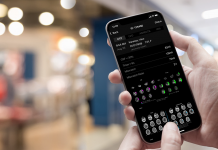Zoë Sebastian from RapidAI shares how novel solutions are making a meaningful impact on the delivery of care, reducing physician burnout, and ultimately improving patient outcomes in stroke care and beyond
Over the past three years, we have become increasingly attune to the extreme levels of physician burnout around the world. For example, a July 2022 survey by the UK’s General Medical Council found that 66% of UK physicians often or always felt worn out at the end of the day, and in September of that same year, a similar survey by the American Medical Association showed that 63% of physicians were experiencing at least one manifestation of burnout – an all-time high, according to the organisation.
While at the time, people, even those within healthcare, largely attributed these extreme levels of burnout to the enormous strain caused by COVID-19, many physicians felt that the pandemic was only one of many (albeit the most extreme) factors contributing to a problem that had been growing for years. Another of the largest contributors to physician burnout and frustration being workflow.
80% of physician burnout is due to workflow issues
According to research by The New England Journal of Medicine, about 80% of physician burnout is due to workflow issues – including the administrative, operational, and clinical workstreams that go into delivering patient care.
Some studies suggest that as much as 40% of a clinician’s time is wasted each day through redundant or manual processes, unnecessary repetition, and inefficiencies like poor utilisation of resources. The impact of these workflow challenges can manifest in many different ways, including poor care-team communication, slower decision-making and time to treatment, and errors and mistakes that indirectly or directly impact patient outcomes.
While each hospital and department faces unique workflow challenges, some technologies are showing great promise in measuring how care teams align to deliver better care.
We spoke to Dr Adrian Blight, a Stroke Physician at St. George’s University Hospital, about some of the challenges he and his team face, the top areas where new and advanced technology is enabling more efficient care in vascular/neurovascular medicine, and what that means for reducing burnout and ultimately improving patient care more broadly.
Interoperability for image transfer
One pain point physicians across the healthcare ecosystem, particularly in stroke care, contend with is the inability to quickly and easily share patient information between hospitals, even within their network.
“Being able to view images for patients referred from other sites sounds quite easy, but it can be very difficult – particularly for hugely time-sensitive clinical scenarios like hyper acute stroke management where time is brain,” said Dr Blight.
One of the reasons, he says, is that despite hospital systems around the world – including the NHS – implementing image exchange portals, the reality is that they are often clunky and, despite their good intentions, rarely operate fast enough to meet physicians’ needs for urgent decision making – often slowing down the process and adding unnecessary stress to physicians as they try to treat patients.
Since implementing RapidAI’s specialty- specific stroke technology that eliminates the need to go through complex NHS network structures and allows him and his team to share patient scans between network hospitals and care teams more quickly, Dr Blight said it has significantly reduced delays in decision-making:
“This technology has made a big impact thus far and helped us greatly improve a process that was once incredibly frustrating. We’re actually able to make clinical decisions within the sort of rapid timeline that we wanted to,” he said.
“This technology has made a big impact thus far and helped us greatly improve a process that was once incredibly frustrating”
Mobile apps for connecting teams outside hospital walls
Another tool that is playing an increasingly critical role in improving workflow and reducing physician burnout is mobile technology.
In stroke care, where the demand for emergency care has increased dramatically, research shows that over 50% of neuro-interventionalists are on-call every other night. Additionally, many physicians have to cover more than one hospital while on-call, further contributing to higher physician burnout.
With HIPAA and GDPR-compliant communication technology like RapidAI, physicians can view, organise, and track cases from multiple sites and communicate with stroke teams in a single application, whether they are at home, in the hospital, or on the go, ensuring no time is lost accessing critical patient information.
“The convenience of the mobile app has been beneficial, particularly if we’re in transit or other clinicians, particularly the interventionists, are in transit,” said Dr Blight. “Going straight from the CT scan workstation to a RapidAI server and then to the mobile device or mobile or web viewer means that key stroke decision makers within the comprehensive stroke centres, like myself, can view images straightaway. It cuts out a lot of unnecessary delays in the process. That’s been incredibly helpful.”
This increased convenience and flexibility that comes with enabling physicians to view images sooner and communicate with the care team easier is not only helping care teams stay more connected than ever – even when physically apart – but is playing a significant role in reducing physician burnout and the lack of work-life balance.
AI for clinical decision support when CDS
One of the most compelling ways technology is helping to alleviate the symptoms of burnout is by supporting physicians in their clinical decision making.
“Some of the automated advances, particularly Rapid CTP, have supported clinical decision making in a way that is much more time efficient and removes some unnecessary delays which were exceptionally frustrating,” said Dr Blight.
In stroke and other specialty interventional care, for example, physicians are already contending with high-stress clinical situations, often on little sleep while on-call; clinical decision support AI can be a welcome addition to their clinical workflow.
“Some of the AI tools are incredibly helpful in supporting clinicians with decision making, particularly those decisions on your own without much clinical support, often in the middle of the night,” said Dr Blight. “By supporting clinicians with complex decisions, we’re also helping to reduce clinician variability, and that is a really good example of where AI technology can support the clinician workforce.”
“…a really good example of where AI technology can support the clinician workforce”
Additionally, even for the most experienced and confident clinicians, AI-enabled clinical decision support tools are helping many to ‘see’ and analyse information not previously capturable by the human eye – which can have a remarkable impact on care decisions.
“More diagnostic information is really helpful to any clinician because it makes them feel a bit more confident – more confident in their referrals, and more confident that they’re delivering the best possible care for their patients,” said Dr Blight. “Rapid CTP, for example, gives us even more confidence around the stroke diagnosis and the amount of potentially salvageable brain for our interventions to be effective.”
While stopping – or furthermore reversing – physician burnout is an enormous challenge requiring time and individualised approaches, some solutions can make a specific but meaningful impact today.
Advanced clinically-validated tools like RapidAI and others can not only help streamline clinical workflow and improve work-life balance immediately but, over time, enable more efficiency to manage growing case volumes, deliver better care, and improve outcomes.
Contributor Details
More About Stakeholder
-
RapidAI – Improving neurovascular and vascular care
RapidAI enables neurovascular and vascular clinical teams to push the boundaries of care, reducing treatment time and improving outcomes.
Editor's Recommended Articles
-
Must Read >> How can speech recognition redefine patient care?
















